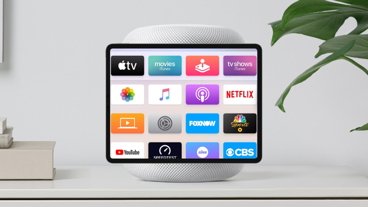Apple's much-ballyhooed sapphire plant in Arizona is not its only production facility for the crystalline material, according to a new regulatory filing from manufacturing partner GT Advanced Technologies, as the two companies have also opened a secondary location in Salem, Mass.
GTAT used a portion of Apple's $578 million prepayment to retrofit its Massachusetts facility — previously a research and development laboratory — with new furnaces to match those in Arizona, according to an amended version of the company's quarterly report. The amendment was filed with the Securities and Exchange Commission earlier this week and first noticed by analyst Matt Margolis.
The 50,000-square-foot Salem plant is significantly smaller than its Arizona cousin, which measures some 1.3 million square feet. It is unclear if Apple is depending on the Salem facility — which appears to have begun growing sapphire in December — for production, or if the company is simply using it as a testbed.
Apple has already been rumored to be exploring an expansion of the Arizona location, which could potentially see it double in size. That could mean the installation of as many as 5,000 furnaces at the site, easily making it the largest manufactured sapphire plant in the world.
Speculation has run rife with regard to Apple's plans for the enormous quantities of sapphire its plants are capable of producing, with many focusing on its potential uses in the cover glass of future iPhones or the so-called "iWatch."
The investment is likely to have a less exciting purpose, however. Apple is widely expected to bring its sapphire-covered Touch ID sensor to the iPad later this year, and the material is also used as scratch-resistant lens covers for the rear-facing cameras in iPhones. Together, those product lines sell nearly 250 million devices each year and continue to grow.
 Sam Oliver
Sam Oliver







 Charles Martin
Charles Martin


 Wesley Hilliard
Wesley Hilliard
 Stephen Silver
Stephen Silver
 William Gallagher
William Gallagher

 Marko Zivkovic
Marko Zivkovic








35 Comments
Whatever Apple is working on here is something that was probably initiated several years ago. They really do invest in the future, but keep a low profile, no?
[quote name="Suddenly Newton" url="/t/180807/apple-gtat-open-second-sapphire-manufacturing-facility-in-massachusetts#post_2552681"]Whatever Apple is working on here is something that was probably initiated several years ago. They really do invest in the future, but keep a low profile, no?[/quote] I'm guessing this is what Ive meant when he said Apple was working with new materials. He said he's been involved with it for several years.
Other companies just don't realize they aren't nearly nimble enough to keep up with Apple.
News... or matter of fact. Given Apple's Growth rates, if it needs X sapphire production day 0, day 365 it will need 1.50X (Apple's growth is that much YoY for flagship phones and iPads). We should be seeing LOTS of sapphire plants opening up all over the world with 50% YoY growth.
[quote name="Suddenly Newton" url="/t/180807/apple-gtat-open-second-sapphire-manufacturing-facility-in-massachusetts#post_2552681"]Whatever Apple is working on here is something that was probably initiated several years ago. They really do invest in the future, but keep a low profile, no?[/quote] It would be better if they didn't think longterm. It would be better if they held impromptu events to show us ideas they just thought of or create CGI-based videos of what the technology might eventually be like¡